Andrew R Sparks
age ~60
from Greensboro, NC
- Also known as:
-
- Andrea R Sparks
- Andy R Sparks
- Andrew R Parks
- Andrew R Spraks
- Phone and address:
- 104 Country Park Rd, Greensboro, NC 27455
Andrew Sparks Phones & Addresses
- 104 Country Park Rd, Greensboro, NC 27455
- Guilford, NC
- Stokesdale, NC
- Brighton, MA
- 12 College Ave, Poughkeepsie, NY 12603 • (845)4734487
- Cambridge, MA
- Storrs Mansfield, CT
- Altamont, NY
Work
-
Address:Ten Post Office Square 8Th Floor, Boston, MA 02109
-
Specialities:Family - 100%
Ranks
-
Licence:Massachusetts - Active
-
Date:2006
Us Patents
-
Method For Capping A Mems Wafer
view source -
US Patent:8058144, Nov 15, 2011
-
Filed:May 19, 2009
-
Appl. No.:12/468185
-
Inventors:Milind Bhagavat - Medford MA, US
Erik Tarvin - South Boston MA, US
Firas Sammoura - Melrose MA, US
Kuang Yang - Newton MA, US
Andrew Sparks - Cambridge MA, US -
Assignee:Analog Devices, Inc. - Norwood MA
-
International Classification:H01L 21/46
C03B 29/00 -
US Classification:438456, 156 8911, 65 31, 65 36, 65 42, 65 43, 65 58
-
Abstract:A method for capping a MEMS wafer to form a hermetically sealed device. The method includes applying a glass bonding agent to the cap wafer and burning off organic material in the glass bonding agent. The cap wafer/glass bonding agent combination is then cleaned to reduce lead in the combination. The cleaning is preferably accomplished using an oxygen plasma. The MEMS device is coated with a WASA agent. The cap wafer is then bonded to the MEMS wafer by heating this combination in a capping gas atmosphere of hydrogen molecules in a gas such as nitrogen, argon or neon. This method of capping the MEMS wafer can reduce stiction in the MEMS device.
-
Systems And Methods For Determining Resonant Frequency And Quality Factor Of Overdamped Systems
view source -
US Patent:8464571, Jun 18, 2013
-
Filed:Mar 22, 2010
-
Appl. No.:12/728867
-
Inventors:Andrew Sparks - Cambridge MA, US
Michael Judy - Ipswich MA, US -
Assignee:Analog Devices, Inc. - Norwood MA
-
International Classification:G01P 21/00
-
US Classification:73 138, 73 101, 702104
-
Abstract:A calibration system for a MEMS system having at least one overdamped motion axis includes a measurement module for determining a location of a pole of a MEMS device in the overdamped motion axis, a closed-loop feedback system configured to change a first location of the pole to a second location of the pole, and a computation module for calculating a resonant frequency and/or a quality factor using the first and the second location of the pole as determined by the measurement module. The calibration system further includes a calibration module for calibrating the MEMS system based on the calculated resonant frequency and/or the calculated quality factor.
-
Acoustic Transducer Chip
view source -
US Patent:8498178, Jul 30, 2013
-
Filed:Dec 13, 2011
-
Appl. No.:13/324565
-
Inventors:Christophe Antoine - Somerville MA, US
Andrew W. Sparks - Cambridge MA, US -
Assignee:Analog Devices, Inc. - Norwood MA
-
International Classification:B06B 1/02
-
US Classification:367138
-
Abstract:An array of acoustic transducing unit cells configured with an acoustic focus or a beam steering orientation. A variety of time delays between consecutively coupled acoustic transducing unit cells provides acoustic focus. In another configuration, a resistive signal path between adjacent acoustic transducing unit cells can be used to acoustically steer an acoustic beam in a direction non-normal to the top surface in which the array is disposed. In a further embodiment, a signal pad is made available at each end of the connections through an array of capacitive micromachined ultrasonic transducing unit cells.
-
Mems In-Plane Resonators
view source -
US Patent:8593155, Nov 26, 2013
-
Filed:Aug 10, 2010
-
Appl. No.:12/853619
-
Inventors:Andrew Sparks - Cambridge MA, US
Milind Bhagavat - Medford MA, US -
Assignee:Analog Devices, Inc. - Norwood MA
-
International Classification:G01R 27/04
-
US Classification:324633
-
Abstract:MEMS in-plane resonators include a substrate wafer, at least one resonant mass supported by the substrate wafer and configured to resonate substantially in-plane, and at least one transducer coupled to the at least one resonant mass for at least one of driving and sensing in-plane movement of the at least one resonant mass, wherein at least part of one surface of the resonant mass is configured for exposure to an external environment and wherein the at least one transducer is isolated from the external environment. Such MEMS in-plane resonators may be fabricated using conventional surface micromachining techniques and high-volume wafer fabrication processes and may be configured for liquid applications (e. g. , viscometry, densitometry, chemical/biological sensing), gas sensing (e. g. , where a polymer film is added to the sensor surface, further degrading the damping performance), or other applications.
-
Scanning Probe Microscopy With Inherent Disturbance Suppression
view source -
US Patent:20060033024, Feb 16, 2006
-
Filed:Jun 15, 2005
-
Appl. No.:11/153300
-
Inventors:Andrew Sparks - Cambridge MA, US
Scott Manalis - Cambridge MA, US -
International Classification:G01N 23/00
-
US Classification:250306000
-
Abstract:A method for inherently suppressing out-of-plane disturbances in scanning probe microscopy that facilitates higher resolution imaging, particularly in noisy environments.
-
Micromechanical Membranes And Related Structures And Methods
view source -
US Patent:20110284995, Nov 24, 2011
-
Filed:May 20, 2011
-
Appl. No.:13/112587
-
Inventors:Jan H. Kuypers - Cambridge MA, US
Andrew Sparks - Cambridge MA, US
Klaus Juergen Schoepf - Chandler AZ, US
Reimund Rebel - Maricopa AZ, US -
Assignee:Sand9, Inc. - Cambridge MA
-
International Classification:H01L 29/06
H01L 21/324
H01L 21/316 -
US Classification:257622, 257618, 438770, 438795, 257E29022, 257E21283, 257E21211
-
Abstract:Micromechanical membranes suitable for formation of mechanical resonating structures are described, as well as methods for making such membranes. The membranes may be formed by forming cavities in a substrate, and in some instances may be oxidized to provide desired mechanical properties. Mechanical resonating structures may be formed from the membrane and oxide structures.
-
Microelectromechanical Gyroscopes And Related Apparatus And Methods
view source -
US Patent:20120006113, Jan 12, 2012
-
Filed:Apr 20, 2011
-
Appl. No.:13/091018
-
Inventors:Guiti Zolfagharkhani - Brighton MA, US
Jan H. Kuypers - Cambridge MA, US
Alexei Gaidarzhy - Brighton MA, US
Andrew Sparks - Cambridge MA, US -
Assignee:SAND9, INC. - Cambridge MA
-
International Classification:G01C 19/56
-
US Classification:7350412
-
Abstract:In one embodiment, an apparatus includes a resonant structure having a plate, a drive electrode and a sense electrode. The resonant structure defines an axis substantially orthogonal to a plane defined by the plate when the resonant structure is not excited. The plate is formed from a piezoelectric material. The drive electrode is configured to excite the resonant structure, and the sense electrode is configured to sense a signal in response to rotation of the resonant structure about the axis.
-
Mems Sensors With Closed Nodal Anchors For Operation In An In-Plane Contour Mode
view source -
US Patent:20120195797, Aug 2, 2012
-
Filed:Jan 31, 2011
-
Appl. No.:13/017247
-
Inventors:Andrew Sparks - Cambridge MA, US
William D. Sawyer - Arlington MA, US -
Assignee:ANALOG DEVICES, INC. - Norwood MA
-
International Classification:G01N 33/00
G01R 3/00
G01N 29/02 -
US Classification:422 69, 73 2406, 29595
-
Abstract:A MEMS sensor includes at least one closed nodal anchor along a predetermined closed nodal path on at least one surface of a resonant mass. The resonant mass may be configured to resonate substantially in an in-plane contour mode. Drive and/or sense electrodes may be disposed within a cavity formed at least in part by the resonant mass, the closed nodal anchor, and a substrate.
Isbn (Books And Publications)








Webster's New World Large Print Dictionary: Compact School & Office Edition
view sourceAuthor
Andrew N. Sparks
ISBN #
0671868624
Lawyers & Attorneys

Andrew Wesley Sparks, Boston MA - Lawyer
view sourceAddress:
Ten Post Office Square 8Th Floor, Boston, MA 02109
(617)6922970 (Office)
(617)6922970 (Office)
Licenses:
Massachusetts - Active 2006
Specialties:
Family - 100%

Andrew Sparks - Lawyer
view sourceOffice:
Drummond & Drummond, LLP
Specialties:
Land Use / Zoning
Real Estate Litigation
Commercial Litigation
Banking
Bankruptcy
Creditors Rights
Land Use
Real Estate Litigation
Commercial Litigation
Banking
Bankruptcy
Creditors Rights
Land Use
ISLN:
903531120
Admitted:
1987
University:
University of Massachusetts, B.A., 1984
Law School:
Valparaiso University School of Law, J.D., 1987

Andrew W. Sparks, Waltham MA - Lawyer
view sourceOffice:
Rinaldi & Sparks, LLP
303 Wyman Street, Suite 300, Waltham, MA 02451
303 Wyman Street, Suite 300, Waltham, MA 02451
Mailing Address:
Ten Post Office Square, 8th Floor South, Boston, MA, 02109
Phone:
(617)6922970 (Phone), (617)6922971 (Fax)
Specialties:
Child Custody
Divorce
Family Law
Child Support
Fathers Rights
Adoptions
Family Mediation
Gay Divorce
Paternity
Premarital Agreements
Same Sex Marriage
Spousal Support
Divorce
Family Law
Child Support
Fathers Rights
Adoptions
Family Mediation
Gay Divorce
Paternity
Premarital Agreements
Same Sex Marriage
Spousal Support
Memberships:
Massachusetts (Member, Family Law Division) and American Bar Associations.
ISLN:
919685916
Admitted:
2006, Massachusetts
U.S. District Court, District of Massachusetts
U.S. District Court, District of Massachusetts
University:
University of Massachusetts, B.A.
Law School:
Suffolk University Law School, J.D.
Links:
Site
Biography:
Formerly with: Dakoyannis, Curtin & Sherring, LLC; Family Law Practitioners, P.C. (Also at Boston Office)
Name / Title
Company / Classification
Phones & Addresses
Managing
E & A Wholesale, Ltd. Co
CABLE LIFE LLC
ANDREW SPARKS PRODUCTIONS LLC
STR8 DOPE ENTERTAINMENT, LLC
KING SPARKS ENTERTAINMENT, LLC
GYPSY PIZZA COMPANY
IMAGINARIUM BREWING COMPANY
THE GRAND REPUBLIC BREWING COMPANY, LC
Resumes

Senior Vice President Development
view sourceLocation:
8657 Wine Leaf Cv, Germantown, TN 38139
Industry:
Biotechnology
Work:
Ariosa Diagnostics - San Jose CA since May 2011
VP, Operations
Ariosa Diagnostics - San Jose CA May 2010 - May 2011
VP, Genomics
Complete Genomics 2008 - 2010
Senior Director of Development
Complete Genomics 2007 - 2008
Director of Development
Affymetrix 2005 - 2007
Associate Director of Product Research
VP, Operations
Ariosa Diagnostics - San Jose CA May 2010 - May 2011
VP, Genomics
Complete Genomics 2008 - 2010
Senior Director of Development
Complete Genomics 2007 - 2008
Director of Development
Affymetrix 2005 - 2007
Associate Director of Product Research
Education:
The Johns Hopkins University School of Medicine 1995 - 1999
University of North Carolina at Chapel Hill School of Medicine 1990 - 1995
University of North Carolina at Chapel Hill School of Medicine 1990 - 1995
Skills:
Genomics
Genetics
Biotechnology
Dna Sequencing
Molecular Biology
Life Sciences
Sequencing
Genotyping
Dna
Assay Development
Bioinformatics
Biochemistry
Microarray
Pcr
R&D
Cell
Cell Biology
Cancer
Protein Chemistry
Oncology
Molecular Genetics
High Throughput Screening
Commercialization
Rt Pcr
Biomarkers
Clinical Trials
Lifesciences
Qpcr
Laboratory Automation
Biopharmaceuticals
Clinical Development
Molecular Cloning
Medical Diagnostics
Infectious Diseases
Genome Sequencing
Dna Extraction
Genetics
Biotechnology
Dna Sequencing
Molecular Biology
Life Sciences
Sequencing
Genotyping
Dna
Assay Development
Bioinformatics
Biochemistry
Microarray
Pcr
R&D
Cell
Cell Biology
Cancer
Protein Chemistry
Oncology
Molecular Genetics
High Throughput Screening
Commercialization
Rt Pcr
Biomarkers
Clinical Trials
Lifesciences
Qpcr
Laboratory Automation
Biopharmaceuticals
Clinical Development
Molecular Cloning
Medical Diagnostics
Infectious Diseases
Genome Sequencing
Dna Extraction

Andrew Sparks
view source
Andrew Sparks
view sourceClassmates

Andrew Sparks
view sourceSchools:
Blair Elementary School Fairchild Afb WA 1990-1992, Lakenheath American Elementary School Lakenheath CT 1992-1996, Nathan Twining Middle School Grand Forks ND 1996-1998, McNabb Middle School Mt. Sterling KY 1998-1999
Community:
Betty Walters

Andrew Sparks
view sourceSchools:
Aletheia Christian Academy Pensacola FL 2002-2006
Community:
Shelly Chittam

Andrew Sparks
view sourceSchools:
Lincoln High School Los Angeles CA 1970-1974
Community:
Fabian Falconett, Viviana Basus, Frank Ramos

Andrew Sparks
view sourceSchools:
Decastle School New Castle DE 1981-1985
Community:
Michele Elwood, Nichole Roberts, Basil Barianos, Jimmie Haywood

Andrew Sparks
view sourceSchools:
Shawnee Mission East Prairie Village KS 1982-1986
Community:
Sheila Swope, Kevin Sobba, John Calhoun, David Dressler

Andrew Sparks
view sourceSchools:
Notre Dame High School Peoria IL 1995-1999
Community:
Adam O'neill, Sue Jones, Alysia Conklin, Bob Smith, Derek Wakeman, Chaeles Caldwell, Lindsey Williams, Crescinda Miles, Marc Blumthal, Amy Connor, Melissa Kirk, Marissa Reilly

Andrew Sparks
view sourceSchools:
Norman North High School Norman OK 2007-2011
Community:
Colin Marang, Brealyn Brashier, Shanesta Witte, Taylor Rogers, Logan Branch, Jared Abbott, Emily Rush, Raymond Young, Ronald Stiehler, Jose Sandoval, Patrick Folmar

Andrew Sparks
view sourceSchools:
Chatham Central High School Bear Creek NC 1985-1989
Community:
Wendi Minton, Dave Smit, Sherry Mooneyhan, Brandy Oliver, Leisa Alston, Fresca Kiser, Sally Smith, Patti Binkley, Traci Bazala, Mark Welch, Vicky Lindsey
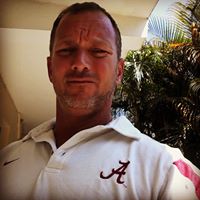
Andrew Sparks Panama Cit...
view sourceFriends:
Melissa Buffalino, Erik Okonczak, Brandi Littlejohn, Lisa Cox
Andrew Sparks (Panama City, FL)
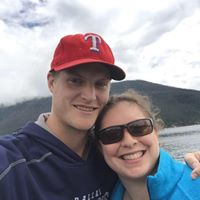
Andrew Sparks Dallas / F...
view sourceAndrew Sparks (Dallas / Fort Worth, TX)
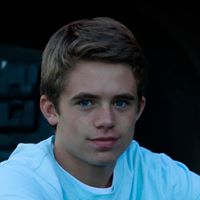
Andrew Sparks Syracuse NY
view sourceAndrew Sparks (Syracuse, NY)

Andrew Sparks Miami FL
view sourceAndrew Sparks (Miami, FL)
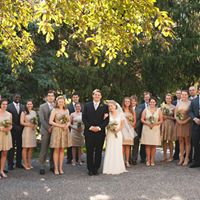
Andrew Sparks Lafayette IN
view sourceAndrew Sparks (Lafayette, IN)
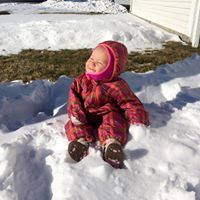
Andrew Sparks Bost MA
view sourceFriends:
James M. Fraser, Johanna Benotti, Shenan Fix Russell
Andrew Sparks (Boston, MA)
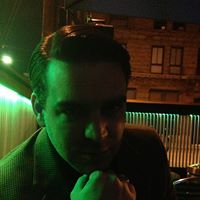
Andrew Sparks McGrannahan...
view sourceAndrew Sparks McGrannahan II (Lexington, KY)
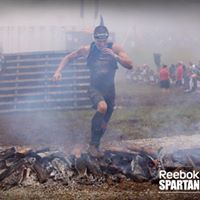
Andrew Sparks Birmingham...
view sourceYoutube
Myspace
Googleplus
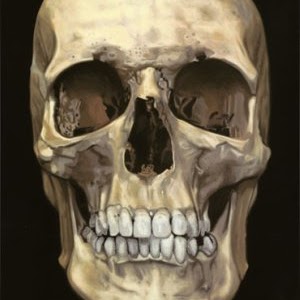
Andrew Sparks
Work:
SEGA Europe - Project Monitor
Education:
Loads

Andrew Sparks

Andrew Sparks
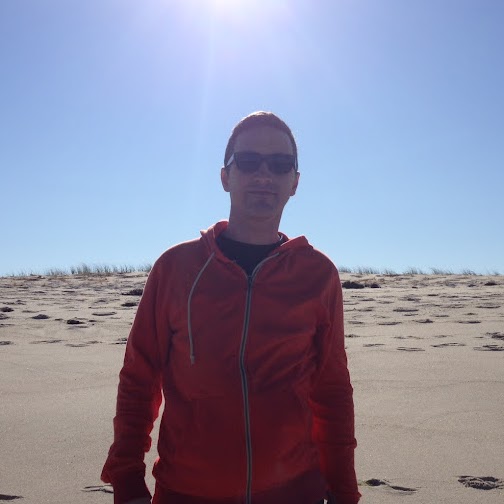
Andrew Sparks

Andrew Sparks

Andrew Sparks

Andrew Sparks

Andrew Sparks
Flickr
News

Feds try to recoup money from Ky. nursing home
view source- attorneys Andrew Sparks and Paul McCaffrey claim that from 2004 to 2008, numerous patients suffered serious injuries because nursing home personnel didn't follow physicians' orders, didn't properly treat bed sores, didn't update resident care plans, and didn't monitor blood-sugar levels of diabetic
- Date: Jul 18, 2011
- Category: Health
- Source: Google
Plaxo

Andrew W. Sparks
view sourceWoburn and Cambridge, MA

Andrew Sparks
view sourceGet Report for Andrew R Sparks from Greensboro, NC, age ~60

















